Strength Training Do’s and Don’ts for Kids
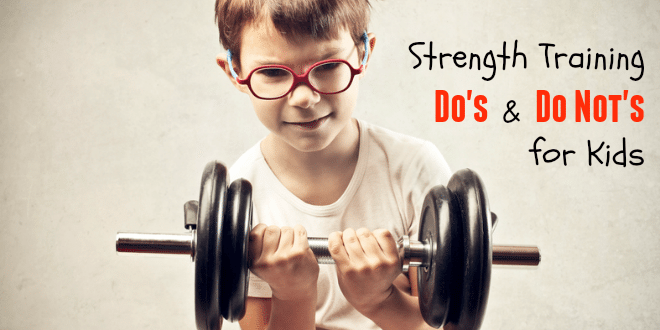
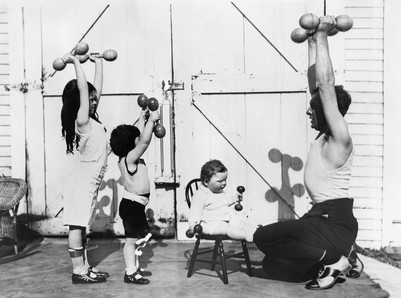 Not too long ago, a slightly disturbing video was posted on YouTube. A six-year-old boy was bodybuilding with his father and his muscle definition was incredible; he looked like a mini Arnold Schwarzenegger. It prompted questions as to whether this type of strenuous training would be harmful or if it might stunt the child’s growth. Of course, people also wanted to know if the thing was a hoax...
Not too long ago, a slightly disturbing video was posted on YouTube. A six-year-old boy was bodybuilding with his father and his muscle definition was incredible; he looked like a mini Arnold Schwarzenegger. It prompted questions as to whether this type of strenuous training would be harmful or if it might stunt the child’s growth. Of course, people also wanted to know if the thing was a hoax...Regardless of whether the sight was real or not, it’s important to keep in mind that a child is not just a miniature grown-up. If your child is interesting in strength training and physical fitness beyond some light recreational activity, follow these guidelines to learn what’s safe for children to take on.
https://www.youtube.com/watch?v=nwCqYOqR1Sk
Body Weight Training for Kids
Before a child can hit the gym – and those weight lifting machines or free weights – they've got to master classic body weight training moves. Everything from push-ups and pull-ups to squats, sit-ups and climbing a rope are all typical body weight maneuvers. These are the same moves children learn in school, but if they’re really interested in fitness, you can encourage them to work on their form and stamina at home. By using your own body as resistance, your child will begin developing core muscles to help with stability and balance. Plus, children will strengthen their joints and ligaments to prevent injury later in life. Not to mention, they may start pulling better grades in gym class at school.
[caption id="attachment_17951" align="aligncenter" width="599"]
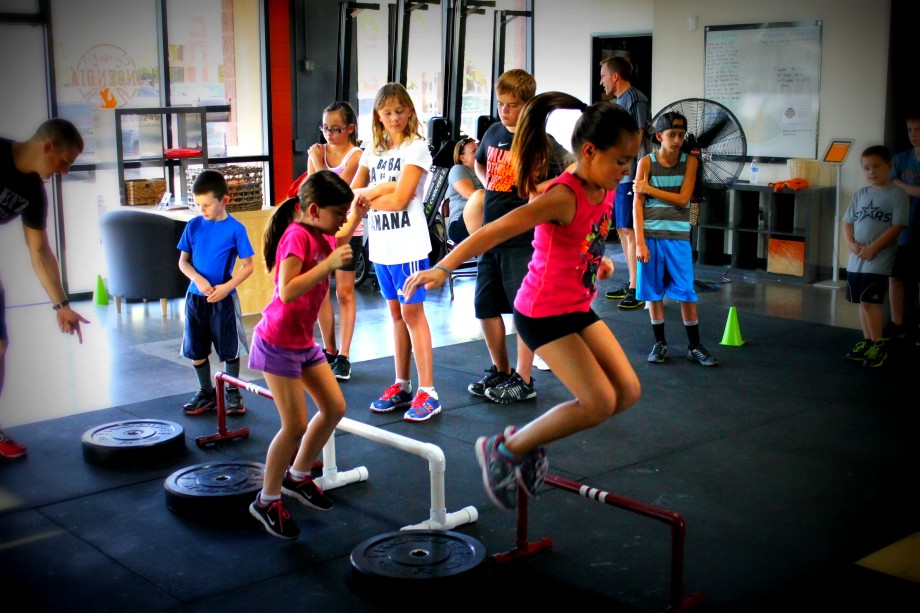 CrossFit Kids is a great program to consider getting your child moving... Picture care of CrossFit Bacchus
[/caption]
CrossFit Kids is a great program to consider getting your child moving... Picture care of CrossFit Bacchus
[/caption]Low Impact Fitness Tools for Children
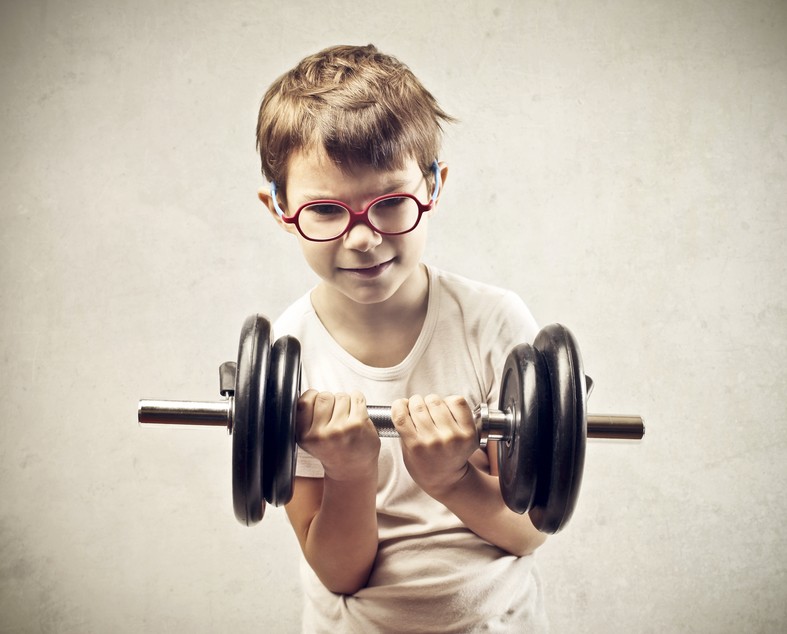 The next step up from body weight training are child-appropriate fitness apparatuses, such as skipping ropes, medicine balls, light dumbbells and resistance bands. For any of these, ensure you’re sizing them appropriately for a child – an adult-length jump rope may cause the child to trip, while too heavy weights, bands, or balls could injure a child. All of these tools help with coördination, strength, and agility. Most of these devices do not need a partner, but when starting out, sometimes it’s a good to have one. A more experienced fitness partner (or parent) can help the child with form. As the child masters these tools, they’ll gain better posture, balance and stability.
The next step up from body weight training are child-appropriate fitness apparatuses, such as skipping ropes, medicine balls, light dumbbells and resistance bands. For any of these, ensure you’re sizing them appropriately for a child – an adult-length jump rope may cause the child to trip, while too heavy weights, bands, or balls could injure a child. All of these tools help with coördination, strength, and agility. Most of these devices do not need a partner, but when starting out, sometimes it’s a good to have one. A more experienced fitness partner (or parent) can help the child with form. As the child masters these tools, they’ll gain better posture, balance and stability.[caption id="attachment_17958" align="alignright" width="300"]
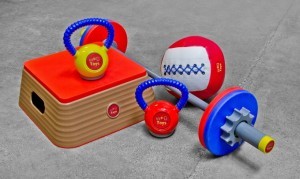 Workout Equipment for kids by WOD Toys are a great option[/caption]
Workout Equipment for kids by WOD Toys are a great option[/caption]Weight Machines: How old is old enough?
Once the basic and body weight exercises are mastered – and a child is of a proper age – they may be able to move onto weight machines. Note that most gyms have a minimum age limit for using the machines, or at least, require parental supervision for anyone under a certain age. However, if you have a home weight machine, just be sure to train your child on it before leaving them to get fit. As with any exercise, proper posture and form are a must. Anyone can sit and do leg lifts on a machine without proper form and without proper weight. The result will just be pulled muscles. Instead, start by focusing on proper form and slow, controlled repetition. Ideally you should start by targeting large muscle groups, like the back or legs. Keep in mind that pre-pubescent children will not be able to develop muscle mass, as their bodies are not ready to do so. Keep things slow and steady, and alternate between the upper body and lower body to support a balanced workout regime.
https://www.youtube.com/watch?v=qH8o9YVvvAU
Bar and Free Weight Training for kids - the debate goes on (and on)
Eventually, your child may be ready to tackle these challenging areas of physical strength building. It cannot be stressed enough that safety is the most important thing when exercising. Never let a child lift weights alone; a spotter must be there. Extreme weight or speed are not a plus in the realm of weight lifting. A safe weight and slow, controlled movements are the only way to benefit. This is where maturity has to be considered. It only takes one moment of goofing around to cause a broken bone or something far more serious.
[caption id="attachment_17954" align="aligncenter" width="618"]
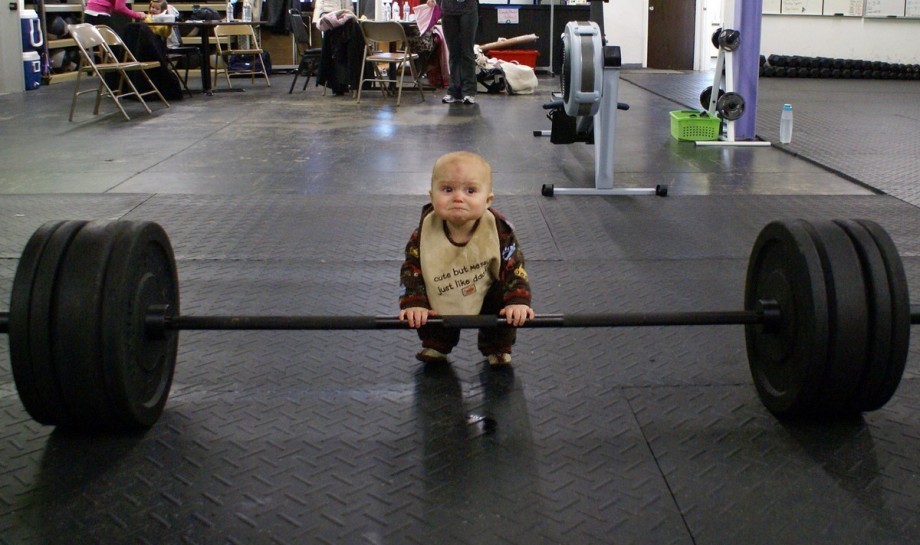 Light Weight "Baby!"[/caption]
Light Weight "Baby!"[/caption]When considering a workout program for your child, start basic and move up. Becoming physically fit and gaining strength, agility and balance won’t happen overnight. It is a progression that can benefit the child greatly if done properly.




































































































